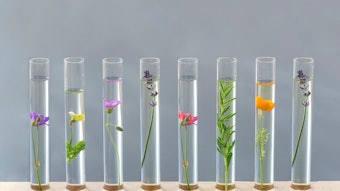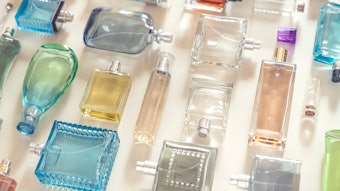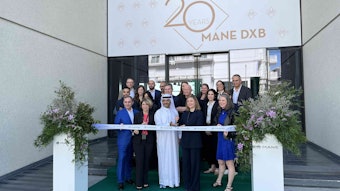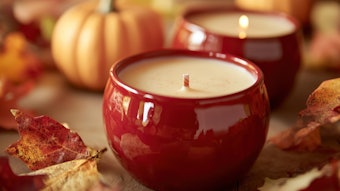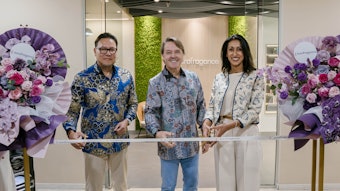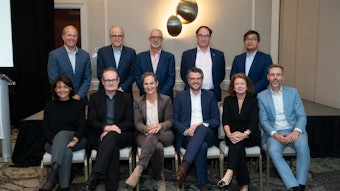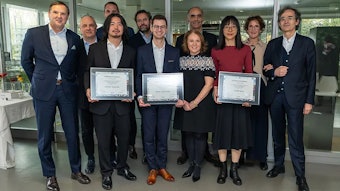A Holistic System
Unfortunately, some consumer goods companies think of fragrance only toward the end of the product development process—despite the fact that fragrance is an indispensable factor in both initial product purchase and eventual repurchase. Facing this common hurdle, Arylessence began creating its own in-depth fragrance development planning program several years ago. The company’s director of marketing, Lori Miller Burns, explains that it is crucial to orient clients to look at fragrance as part of the overall product development process—particularly as everyone is facing time constraints. The result, she says, is that the fragrance house is able to help in creating successful products for the marketplace, effectively becoming a consultative partner.
Arylessence’s program follows 12 steps:
- Define brand positioning
- Review the competitive landscape
- Analyze your fragrances and those of your competitors
- Describe target consumer
- Establish color direction
- Develop packaging concepts
- Rethink resources
- Develop fragrance plan
- Review creativity and fragrance fit
- Test your winners
- Move forward fast
- Complete the loop (post-launch)
“Historically, in this industry, we were focused on communicating trends,” says Cynthia Reichard, executive vice president of client services. “We saw many customers produce products that wouldn’t necessarily connect with the target audience or establish a creative point of difference in the marketplace.” In launching a fragrance planning program, she says, the company seeks to “ensure a complete thought process regarding fragrance.”
Arylessence’s internal program looks at clients’ positioning, brand, competitive landscape, point of difference in the marketplace and how fragrance will elevate these aspects to better connect with consumers at the point of purchase.
“Consumers’ brains respond [to fragrance] before they even think about it,” says Reichard. “It’s an instinctive determination whether or not the fragrance of a product is correct. Therefore, we have to make sure we’ve included every parameter to ensure a positive instinctive response. Everyone knows when a product is fragranced badly—they don’t even have to think about why. Consumers will tell you 'it just isn’t what I expected.’ Fragrance must exceed the expectation of the customer established by the outside visuals and messages of the product.” Such a holistic approach can help avoid such jarring incongruencies as a watermelon-fragranced product presented in a blue bottle or a Cinnamon Toast candle in a brown shade so dark that it communicates burnt toast.
“Because of this model,” Reichard adds, “we’re very comfortable communicating with our customers which direction will be successful and when we think they’re going the wrong way.”
The Process
Arylessence’s fragrance program runs from planning through post-launch analysis and involves perfumers, evaluators, marketing staff and account managers working in concert with customers. When possible, clients share packaging and marketing language with perfumers to ensure a concrete concept of customer expectations. “This,” says Reichard, “is much more than a typical brief like ‘this lotion fragrance is for a woman between the ages of 25 and 50, promotes moisture, and should be reminiscent of a romantic tropical Caribbean night filled with lush blossoms amid a waterfall .’ What we provide [the team and the customer] is actionable demographic data on the competitive landscape and how the fragrance we’re producing will differentiate their new launch amid a sea of competitive products to set this particular product apart and create a lasting emotional bond. The fragrance supports every product attribute; it’s a totally different project.”
Private Label Expansion
Reichard notes that private labels, in addition to national brands, benefit from this systematic fragrance planning. The process helps them to create a framework avoiding “me-too” offerings and elevating store brands to be uniquely positioned products. “We do a lot of work with major retailers and grocery chains that are refining and enhancing their own private label brands to be destination brands,” she adds. “The opportunity in the United States is huge and major retailers are continuing to establish private label management programs,” She adds that these clients also need additional services beyond product development and positioning. Regulatory and consumer safety education in the private label sector is a crucial part of fragrance planning as these clients often lack the resources to stay on top of the latest developments in this area.

